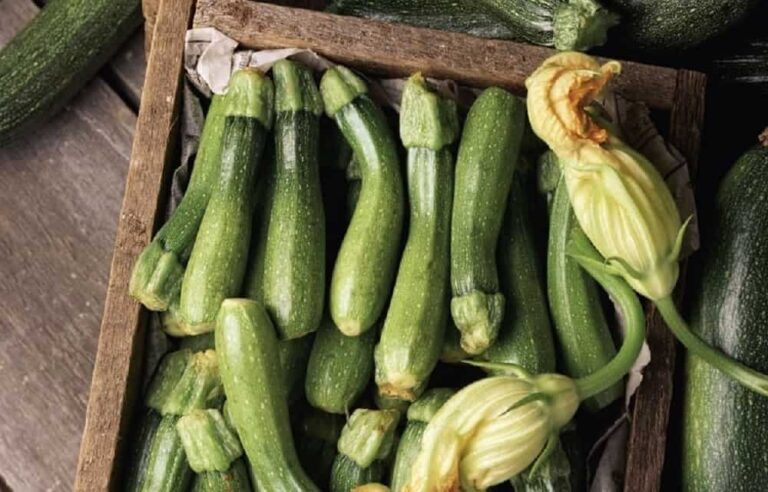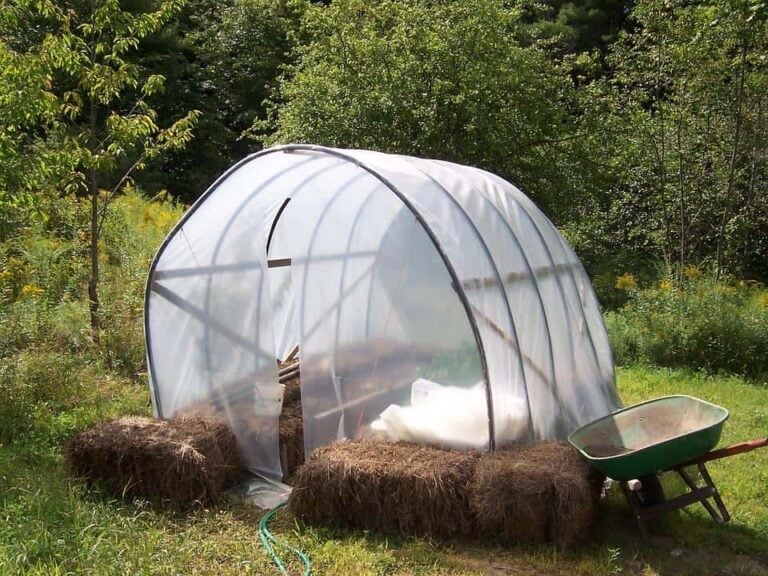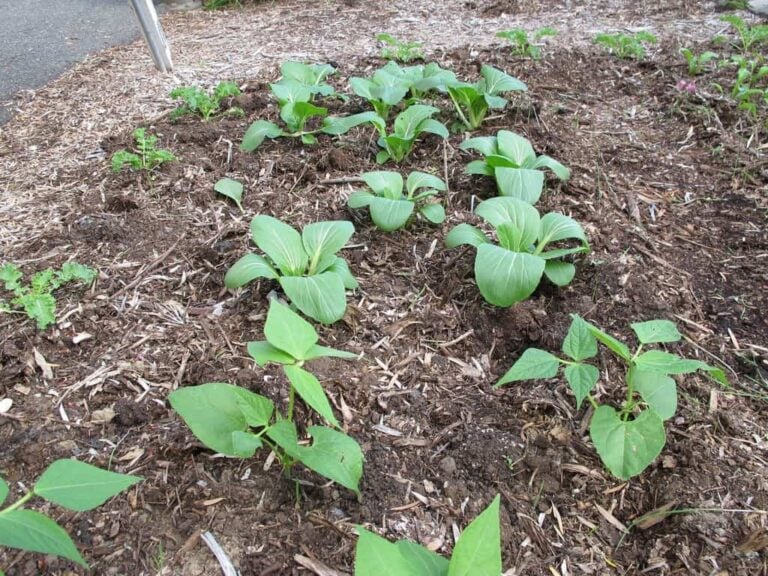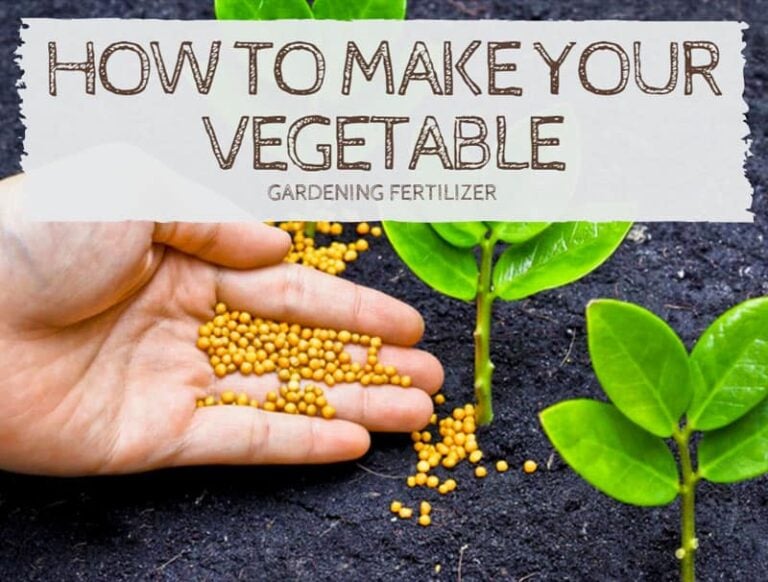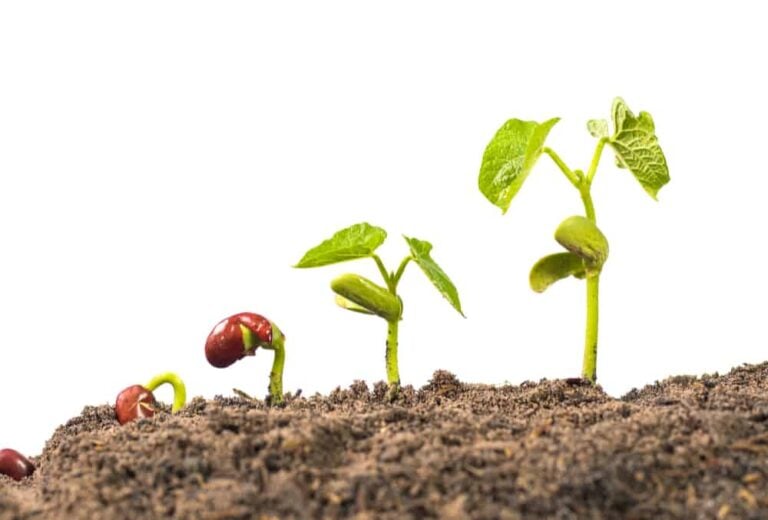How Does Asparagus Grow: A Helpful Guide
You can grow asparagus from seeds or from crowns. Whichever method you choose, it is important to give the plant two or three seasons before you start to harvest its stalks.
Asparagus needs time to establish its roots in the soil. Although you don’t harvest the stalks for the first few growing seasons, you can expect the plant to follow the same pattern of growth from the start. It will produce stalks, which eventually develop fern-like leaves. After a frost, the stems and leaves die back, while the crown and roots remain living in the ground.
Growing Asparagus from Crowns
At the garden center, you’re most likely to find asparagus crowns for sale. Planting the crowns, which look like a “strange sea creature,” according to Modern Farmer, is often the easiest way for people to grow asparagus in a home garden.
Growing asparagus from the crown, which is another name for its roots, also gives you a jump on harvesting. You’ll most likely be able to harvest spears after a year or twoof growth when you plant an asparagus crown.
Starting the Crowns
Asparagus crowns are often either one year or two-years-old. According to Organic Life, two-year-old crowns are often not worth the higher price. Since the crowns were grown in one area for two years, then dug up to be sold to you, they are more likely to suffer transplant shock when you plant them in your garden.
It’s important to choose the area where you’ll grow the asparagus with care before planting the crowns. Depending on conditions, asparagus plants can grow and thrive for two decades. Ideally, the spot will get plenty of sunlight and will have well fertilized soil that drains well. To really thrive, the asparagus crowns will need plenty of compost and fertilizer mixed into the soil.
Growing Asparagus from Seeds
Although crowns are usually the recommended way to to grow asparagus, the plant can be also be grown from seed.
There are a few advantages to planting asparagus seeds. It’s the ideal way to grow asparagus if you really love the plant and want to grow a lot of it. You can usually purchase a packet of many seeds for the same cost as a single asparagus crown. Plus, asparagus grown from seed typically produces more edible stalks than plants grown from crowns.
In the video above, Ali Reynolds of Ali’s Organics walks you through the process of starting asparagus seeds. It’s not much different from the process of starting any other vegetable from seed. You need to plant each seed in a small pot using container mix.
The main difference between asparagus seeds and other plants grown from seeds is how long it takes them to germinate. You might find yourself waiting up to 10 weeks before you see any growth from the seeds at all.
The drawback of starting the plants from seeds is that you have to wait longer for them to produce stalks you can eat. You typically have to wait at least a year (if not two) before you can harvest stalks from a crown. You will most likely have to wait at least two years before you can enjoy the stalks of asparagus grown from seed.
Life Cycle of Asparagus
Why do you have to wait so long before you can actually eat the asparagus you’re growing? It’s due to the life cycle of the plant itself.
Asparagus is a perennial plant. That means that the same plant will continue to live for year after year. In contrast, annual plants thrive for a season or full year, then die back. They produce seeds that, if left in the soil, will create a new plant the next year.
For asparagus to continue to live year after year in the same spot, it needs to develop a healthy root system. When you first plant the crown in your garden, you’re establishing the asparagus’ root system.
Once planted, asparagus will start to produce stalks. Since the root system isn’t that robust in the first year or two, the stalks are likely to be small. You can eat them, but they won’t be as tasty as more mature asparagus stalks. Plus, eating them can damage the plant.
When you leave those initial stalks on the plant, they will keep growing and will develop frilly leaves. Although you might want to cut the leaves off because they seem to be taking over your garden, it’s best to let them alone.
Photosynthesis occurs in the leaves, which then transfers energy to the plant’s roots. The roots are able to grow and spread beneath the soil. The asparagus becomes firmly established and will be able to thrive for years to come.
To make sure the leaves are able to fully transfer energy down to the roots, it’s usually recommended that you wait to cut the plants back until after a few frosts. The leaves and stalks will have turned brown and crispy at the point.
But if you cut those leaves and stalks off too early, the roots don’t get the energy they need. The plant will have a hard time making it to the next season.
Types of Plants
Another thing worth noting about asparagus’ growth cycle is that the plants can be either male or female. Typically, male asparagus is preferred by gardeners, since it produces more robust stalks. Female asparagus ends up producing seeds, which can affect the quality of the shoots it produces.
You can purchase varieties of asparagus that more likely to be all male, such as Jersey Knight. If you purchase a packet of asparagus seeds, it is likely to contain an even mix of male and female seeds.
Ideal Conditions for Asparagus
Asparagus grows best when it has access to three features: water, sun and food. Burpee recommends not letting the soil dry out between waterings. Although you do want to water your asparagus bed regularly, it’s also essential that the soil drain well. If the soil is constantly soggy or if there are areas of standing water, the roots can rot and the plant will suffer.
Whether you choose to grow asparagus from seed or from a crown, paying attention to its needs and giving it time to get established means you’ll be able to enjoy the plant for many years.
Photo by Ishikawa Ken licensed under CC BY-SA 2.0.

